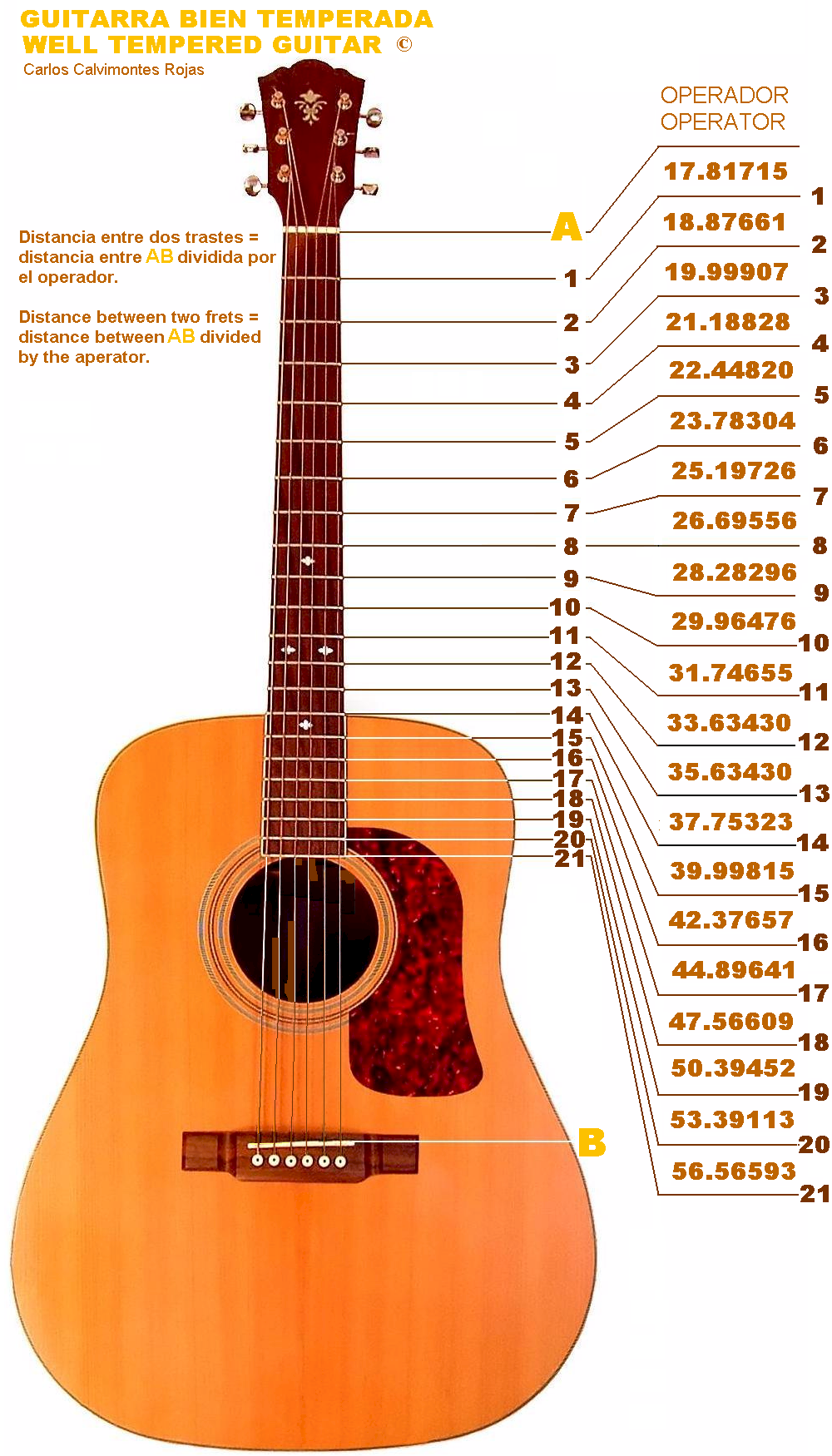En la construcción de una guitarra, es muy importante la colocación de los trastes (de número variable, aunque la guitarra clásica tiene 19), en puntos exactos sobre el diapasón, para lograr una escala tonal correcta, conforme a lo que se ha llegado a determinar por el paulatino incremento del conocimiento de la relación entre la música y las matemáticas.Los antecedentes del interés por la ‘igualdad del templado’ se remontan a mediados del siglo XV, y en el siglo XVIII fue J. S. Bach el que, en los ciclos de preludios y fugas, conjunto que se conoce como el Clave bien temperado, realizó una magistral y completa demostración de las posibilidades musicales y el valor de los semitonos, donde éstos son iguales al resultado de dividir la octava en doce fracciones iguales, con un valor de la duodécima raíz de dos.A principios del siglo XIX, Ernest Chladni, físico y músico alemán, propuso el empleo de ese mismo criterio matemático, para determinar la separación entre cada par de trastes, lo que permite optimizar la afinación de la guitarra.El temperamento se refiere al tipo de afinación de los instrumentos musicales, incluida la voz humana. El sistema temperado responde a la necesidad de afinación, que Bach estimuló con su Clave bien temperado, conocimiento extendido que permite tocar en varias tonalidades en un mismo instrumento, sin tener que afinar especialmente cada vez; para eso, entre cada nota se define un intervalo constante llamado semitono. La distancia entre la cejilla (A) y el primer traste, viene de la división de la distancia (A-B) desde la cejilla al puente, entre 17,817… A partir de ahí, la distancia entre dos trates debe ser igual a la que existe en la distancia inmediatamente anterior, dividida por la duodécima raíz de dos. Aunque los luthiers aplican esos números en la construcción de guitarras, en general no conocen su tradición y menos las personas que tocan guitarra, también cómo se consigue el 17,817…; y, se ignora que todos esos números están estrictamente relacionados con el Número De Oro. |
In the construction of a guitar, is very important the placement of the frets (of changeable number, though the classic guitar has 19), in exact points on the diapason, to achieve a tonal correct scale, in conformity with what it has managed to determine for the gradual increase of the knowledge of the relation between the music and the mathematics. The precedents of the interest of the 'equality of the tempered' go back in the middle of the 15th century, and in the 18th century it was J. S. Bach the one that, in the cycles of preludes and fugues, set that is known as the Well tempered Clavier, realized a magisterial and complete demonstration of the musical possibilities and the value of the semitones, where these are equal to the result of dividing the eighth one in twelve equal fractions, with a value of the twelfth root of two. At the beginning of the 19th century, Ernest Chladni, a German physicist and musician, proposed the employment of the same mathematical criterion, to determine the separation between every couple of frets, which allows to optimize the final touch of the guitar. The temperament refers to the type of final touch of the musical instruments, included the human voice. The tempered system answers to the need of final touch, which Bach stimulated with his Well tempered Clavier, widespread knowledge that allows to touch in several tonalities in the same instrument, without having to play in tune specially every time; for it, between every note a constant interval called semitone is defined. The distance between the nut (A) and the first fret, comes from the division of the distance (A-B) from the nut to the saddle, between 17,817 … From there, the distance between two treat it must be equal to the one that exists in the immediately previous distance divided by the twelfth root of two. Though the luthiers apply these numbers in the construction of guitars, in general there do not know his tradition and fewer persons who touch guitar, also how 17,817... are obtained; and, there is ignored that all these numbers are strictly related to the Golden Number. |


